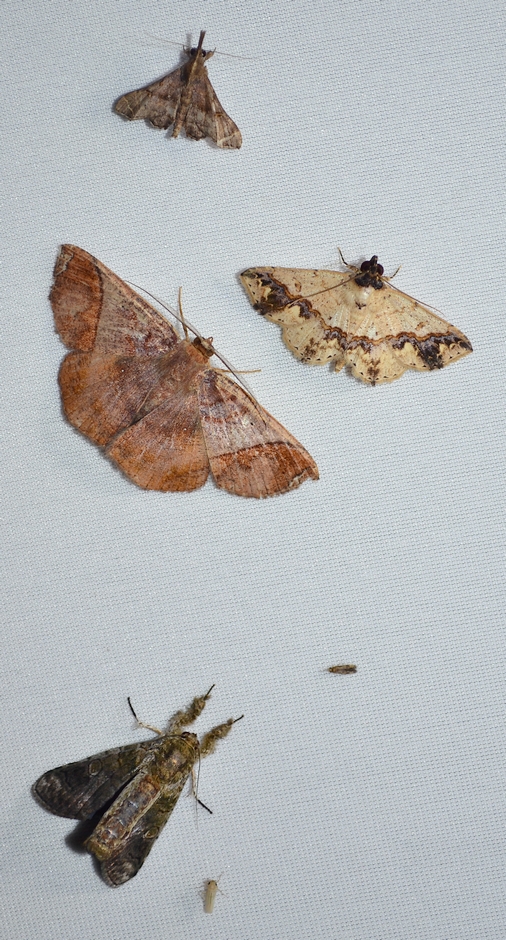Unfortunately I have not been able to spend as much time on this website as I would have liked. Looking back I am amazed that there was a time that I updated it every month! But being busy doesn’t mean that you stop being a naturalist. It just means that you have to find creative ways to fit it into your schedule. And if the available free time during the day is taken up by birds and butterflies, then how about the night? And so, I find myself pursuing moths these days.
Not that I took an interest in moths because I had no other option. Rather it was the logical thing to do. Indeed, if you have an interest in butterflies then it is only natural you should also possess an interest in moths. They are essentially the same after all.

Butterflies and moths all belong to the family Lepidoptera. Many sources will list what are supposed to be key differences between moths and butterflies but they are not meant to be hard and fast rules as it is not really that clear cut.
For one, moths are not limited to the night while butterflies are limited to the day. There are several butterflies which are only active at dusk and there are even more moths species which are active during the day. Perhaps the most commonly seen diurnal moth is Urania leilus which is commonly mistaken for a butterfly due to its size, bright colours and shape.
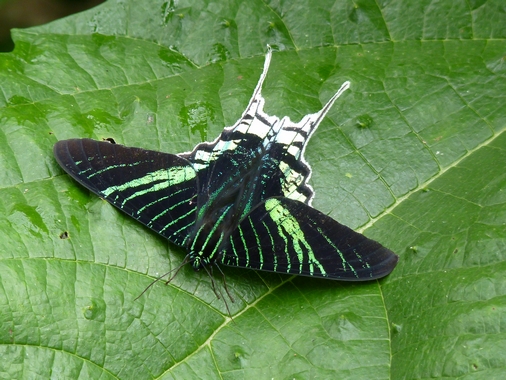
Another supposed guide is that butterflies rest with wings closed while moths rest with wings open and again, there are several examples which illustrate this to be flawed. One guide that is useful, however, is the presence of a clubbed tip on the antennae. Butterflies tend to have clubbed antennae while moths do not. But otherwise, the distinction between a moth and a butterfly is really just for convenience.
Although moths have the same basic body layout (head, thorax, abdomen etc), they can be quite radical in their appearance.
They range from the beautiful…


And some a combination of both…
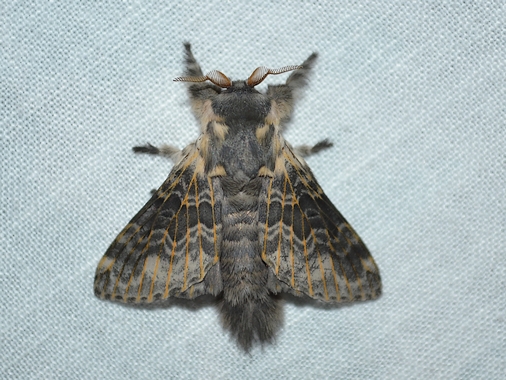
But what really amazes me is the variety within a family – one basic body design customized with different paint jobs, some subtle and others not so subtle. Take my favourite family – the delicate Pyralidae.
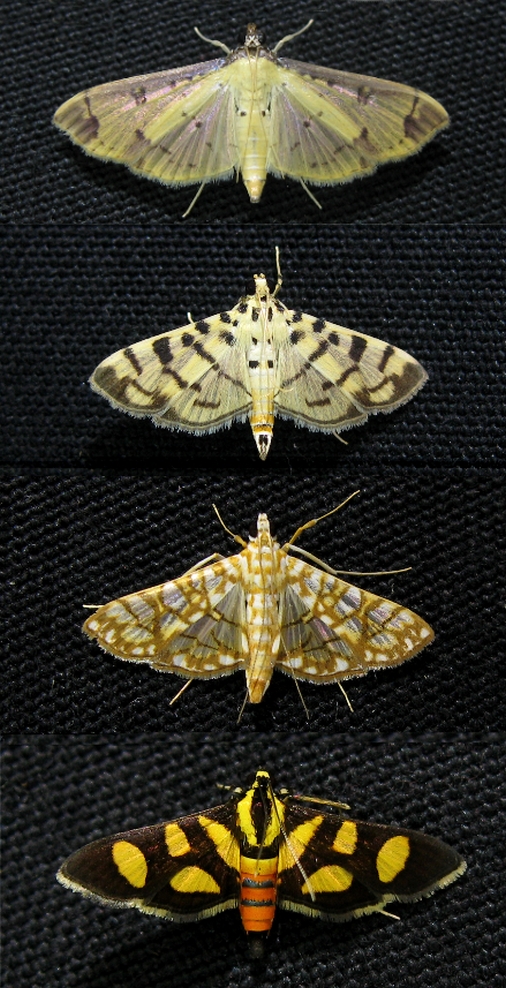
The exact number of moth species in Trinidad & Tobago is not known. According to On the Number of Moths (Lepidoptera) that Occur in Trinidad and Tobago by Dr. Matthew Cock, there may be as many as 3,500 different species of moths in Trinidad. For comparison, there are 474 birds and 765 butterflies. One could probably spend a lifetime trying to work out a full list of species for the island. As for myself, I’m still very much lost in this field, totally dependent on others to identify what I photograph.
I started as anybody who is interested should – at home. If home happens to be in or near to a forest then you will find more than a few being attracted to the lights in your house. If you live in the city, it may be difficult to find moths but that all depends on how much vegetation is nearby. Several years ago I visited the National Academy for the Performing Arts in Port-of-Spain to see some performance or the other. However the real show was taking place outside, as dozens of large sphinx moths of various types were littered about the ground. These moths, powerful flyers that had probably originated from the trees around the Queen’s Park Savannah or the Botanic Gardens, had been drawn in by the academy’s powerful external lighting.
Unsatisfied by the rate at which I was finding new moths that were attracted to the house lights, I eventually started operating a light trap near some trees behind my house earlier this year. Results were immediate and I can still count on a couple of new moths every week.
And it is that which really excites me about moths. If I could record about 200 species of moths just from the pathetic clump of trees in the middle of a field of grass behind my house, imagine what would be possible in the heart of a real forest!
The diversity of moths in a given area is directly related to the diversity of vegetation. The caterpillars of different species of moth feed (sometimes exclusively) on different plant species, so that a diverse range of plants mean a diverse range of caterpillars and, in time, a diverse range of adult moths.
As such, the range of moths at my home is not that fantastic.

Not exactly the full tropical rainforest experience, like in this internet photo taken in Borneo…

So now my focus is shifting away from home and more to the real forests. The fence line at the Morne Bleu Tracking Station is a good place for moths once I can get there early enough in the morning (i.e. before the birds devour them). Other than that, I really have to overnight somewhere to get a chance with the light trap. Thanks to the Trinidad & Tobago Field Naturalists’ Club I have been able to do light trapping in some interesting areas in recent times, such as the Bocas Islands and Grande Riviere.
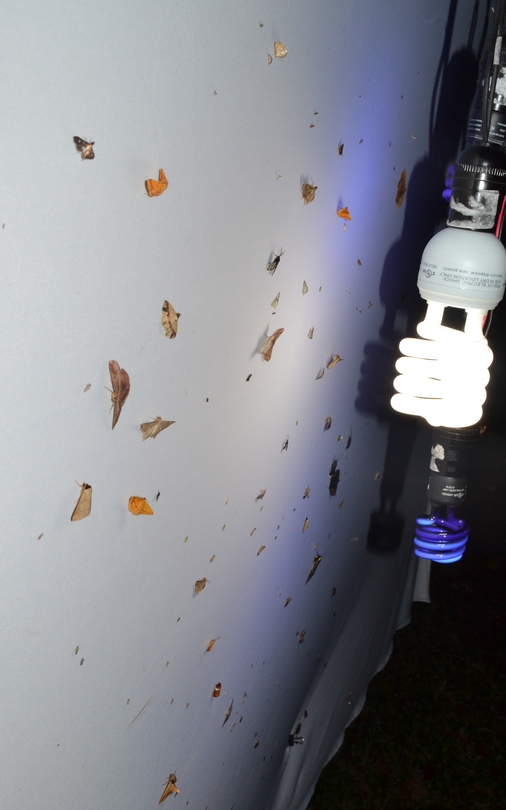
And of course, moths are not the only things drawn to the light trap at night. Beetles, mantises and wasps all put in an appearance. At home, I even have a friendly treefrog which sits politely at the top of my trap and awaits a free meal.
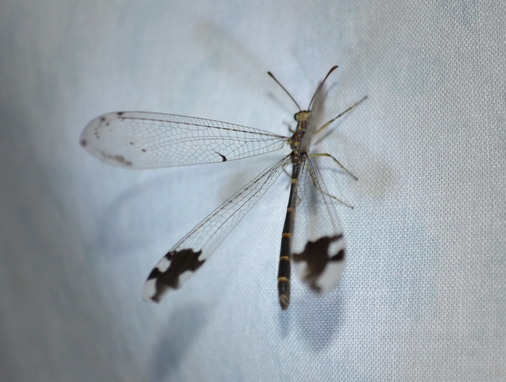

Besides the fact that they have been relatively understudied (for example, as compared to birds), the real thrill for me is that you never know what will be drawn to the light trap. Perhaps it will be one of my favourite species. Perhaps there will be a new one for my photo collection. Perhaps there will be nothing. You never know.
Still, when I find myself willingly awake at a light trap at 2:30am in the morning I do wonder if I am the one trapping the moths or if it’s the other way around.
